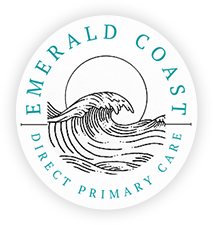Understanding Direct Primary Care (DPC)
Direct Primary Care (DPC) is an innovative healthcare model focused on revitalizing the patient-provider relationship. It’s based on a simple, yet profound principle: healthcare should be personalized, accessible, and affordable. By sidestepping traditional insurance-based billing, DPC practices offer comprehensive care through a flat monthly membership fee. This page is designed to help you understand what Direct Primary Care is, how it differs from traditional healthcare models, and the pros and cons of choosing DPC for your healthcare needs.
What is Direct Primary Care?
Direct Primary Care is a model where patients pay their healthcare providers directly through a monthly membership fee, covering most primary care services including consultations, care management, and in-office procedures. This model emphasizes preventive care, longer visits, and more personal attention from your doctor, fostering a stronger doctor-patient relationship.
How is DPC Different?
Unlike traditional healthcare, which often involves third-party payers, DPC eliminates the need for insurance billing for primary care services. This direct financial relationship between patients and providers removes the barriers and bureaucracy that complicate traditional medical care, leading to more transparent pricing, enhanced access to services, and a focus on preventive care.
DPC Compared to Traditional Healthcare
Feature | Direct Primary Care | Traditional Healthcare |
|---|---|---|
Pricing Model | Flat monthly fee covering most services. | Payment per service, often with copays, deductibles, and insurance billing. |
Access to Care | Same or next-day appointments, with direct access to your provider. | Appointments may be weeks out, with limited direct communication. |
Length of Visits | Longer, unhurried visits to address all concerns. | Shorter visits due to higher patient volume and insurance constraints. |
Focus | Preventive care and maintaining wellness. | Often reactive, focusing on illness and acute care. |
Insurance Billing | No insurance billing for primary care services. | Insurance billed for most services, leading to potential denials and appeals. |
Pros:
-
Personalized Care:
With DPC, you enjoy longer visits and a closer relationship with your provider, ensuring care that's tailored to your individual health needs. -
No Insurance Hassles:
Since DPC doesn't involve insurance billing for primary care, you won't have to worry about copays, deductibles, or unexpected medical bills for primary care services. -
Transparent Pricing:
Membership fees are flat, transparent, and comprehensive, covering most primary care needs without hidden costs. -
Better Access:
DPC practices often offer same-day or next-day appointments, virtual consultations, and direct communication with your healthcare provider. -
Focus on Preventive Care:
With an emphasis on preventive care, DPC aims to keep you healthy and reduce the need for costly specialist and hospital care.
Cons:
-
Monthly Fees:
While the membership fee covers most primary care services, it is an additional monthly cost regardless of how often you use the services. -
Insurance Still Needed for Major Medical Expenses:
DPC covers primary care, but you'll still need insurance for specialist care, hospital stays, and emergencies. -
Limited Availability:
DPC practices are growing, but they may not be available in all areas, potentially limiting access for some patients. -
Not Covered by Medicare/Medicaid:
While DPC can complement Medicare, the membership fees are not covered by Medicare or Medicaid. -
Adjustment Period:
Transitioning from a traditional insurance-based care model to DPC might require an adjustment period for patients accustomed to conventional healthcare structures.
